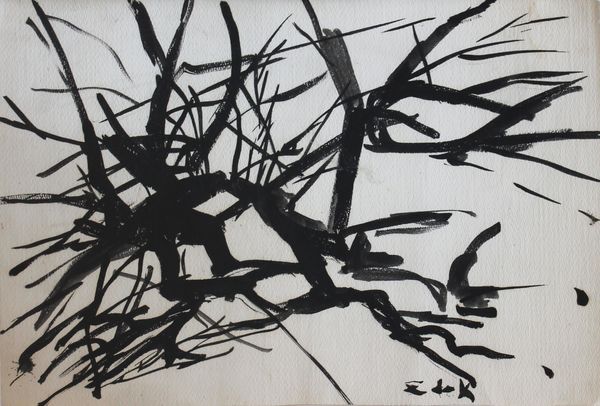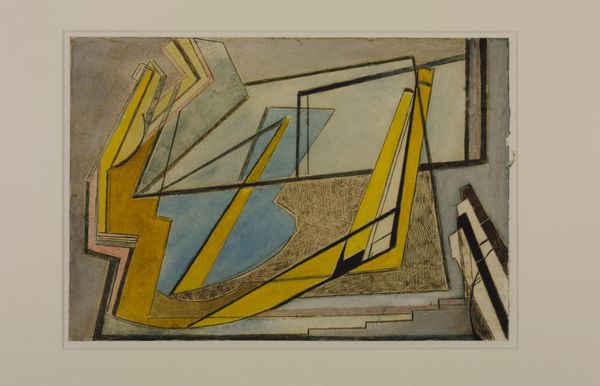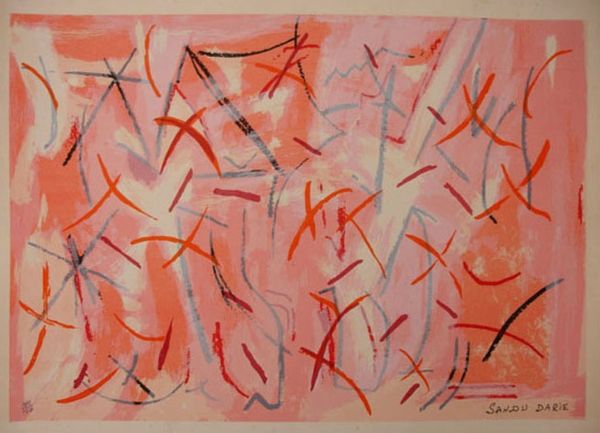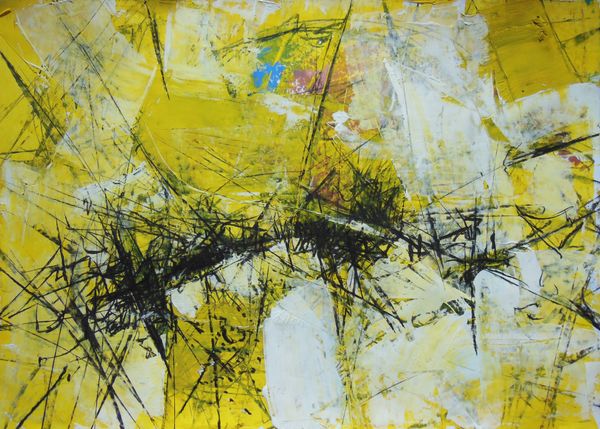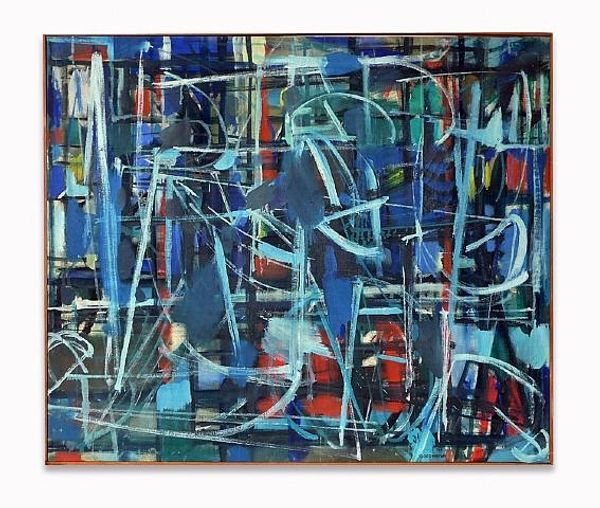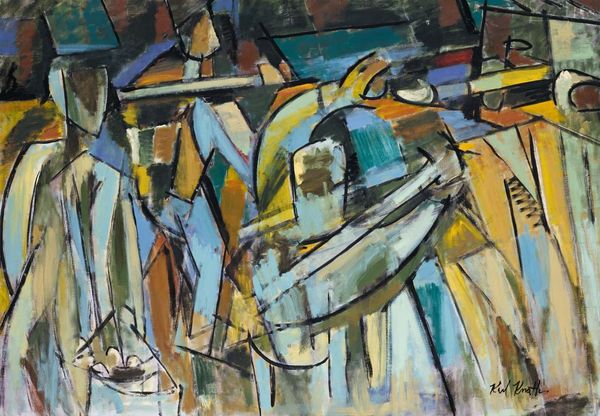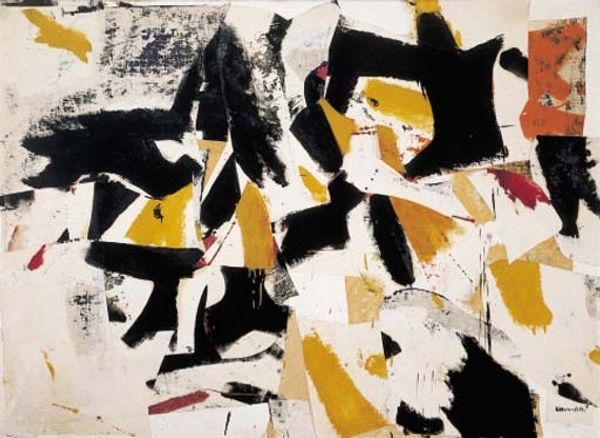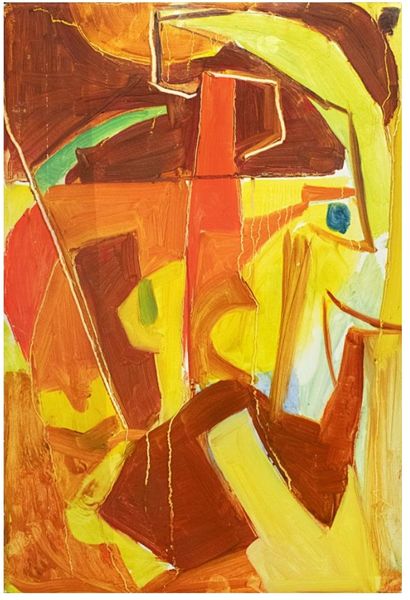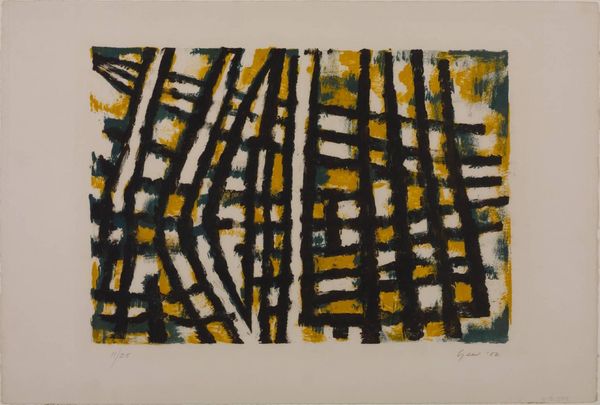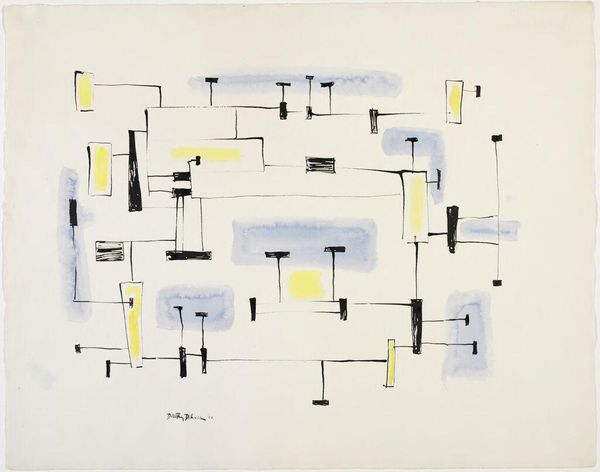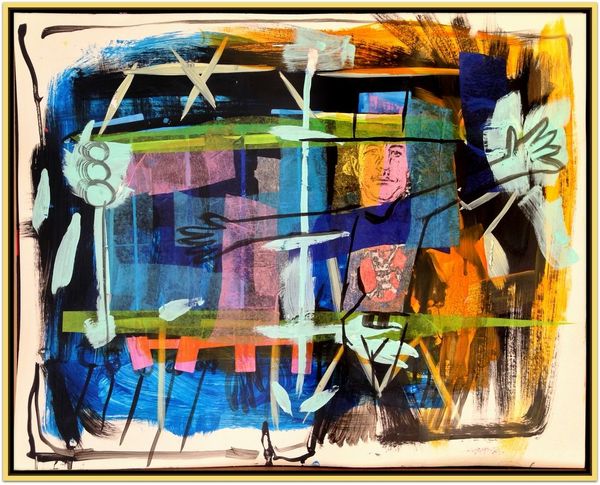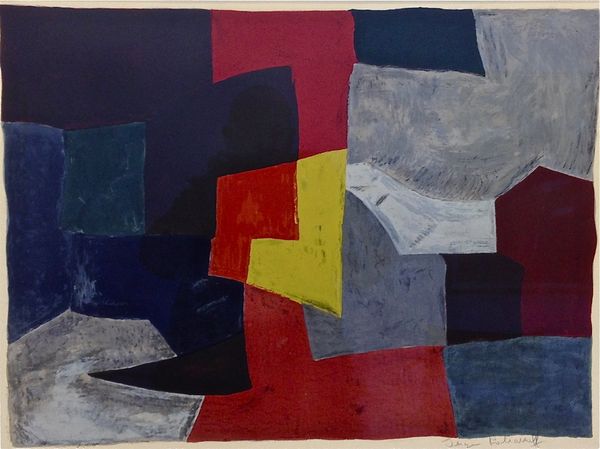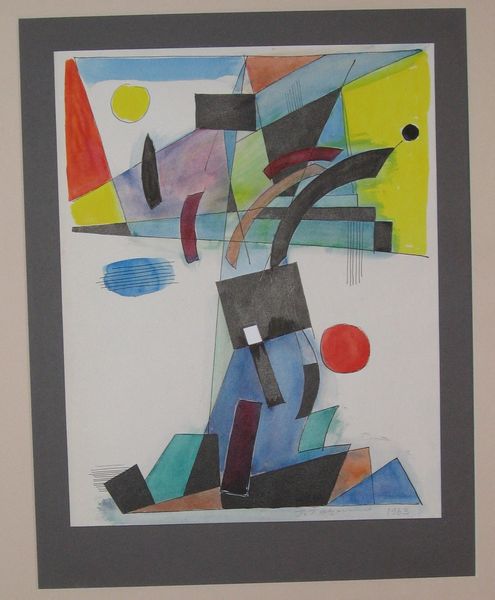
oil-paint
#
abstract-expressionism
#
abstract expressionism
#
oil-paint
#
geometric
#
line
Copyright: Antonio Corpora,Fair Use
Curator: Looking at Antonio Corpora's 1952 painting "Alba/Dawn," executed in oil paint, one can immediately sense a chaotic energy that somehow resolves itself into a harmonious whole. Editor: It definitely strikes me as a bit jarring at first. So many intersecting lines! There's a sense of conflict, perhaps. It feels very anxious, as if something is about to break apart. Is it really trying to portray dawn? Curator: Well, remember this piece comes out of the abstract expressionist movement. Consider how artists like Corpora navigated the post-war period, grappling with new forms of artistic language and grappling with the socio-political issues of their time. He, along with artists worldwide, struggled to find adequate modes of expression, and sought to convey meaning by liberating the artwork from recognizable references. It wasn't merely an aesthetic choice; it was deeply connected to existential and political unrest. Editor: I hear that. But with all these geometric forms floating amidst the pale yellow, I keep searching for a grounding point. Perhaps, in the socio-political reading of it, it embodies the disorientation felt when old ideologies give way and are replaced by new uncertainties? Curator: Precisely! You can look at his dynamic composition, the very act of painting itself, as a reaction to what he observed about the world at that time. The fractured lines might represent shattered social structures or a world in conflict. The abstract composition allows him to capture a feeling, rather than depicting an easy scene or symbol. Editor: And the colors…mostly yellow, some greens, a bit of violet...there's a fragile light battling through, and despite all the angularity, it evokes a sense of hope breaking through. Is that intended to redeem the earlier sense of crisis? Curator: I appreciate you interpreting that way! Whether consciously or not, artists embed social contexts into their work, making them resonant with us even decades later. It showcases a deep human desire to not give in to conflict, that the breaking dawn implies renewal and promise. Editor: This has really challenged me to see the painting beyond just its initial appearance. I initially focused only on how I felt, which was pretty conflicted, and it never dawned on me how deeply embedded art can be with these post-war sentiments, these yearnings for resolution in social and political climates that are often in deep turmoil. Curator: It's in considering its history that its nuances and meaning emerge. Examining this context transforms how we appreciate Corpora’s work.
Comments
No comments
Be the first to comment and join the conversation on the ultimate creative platform.
